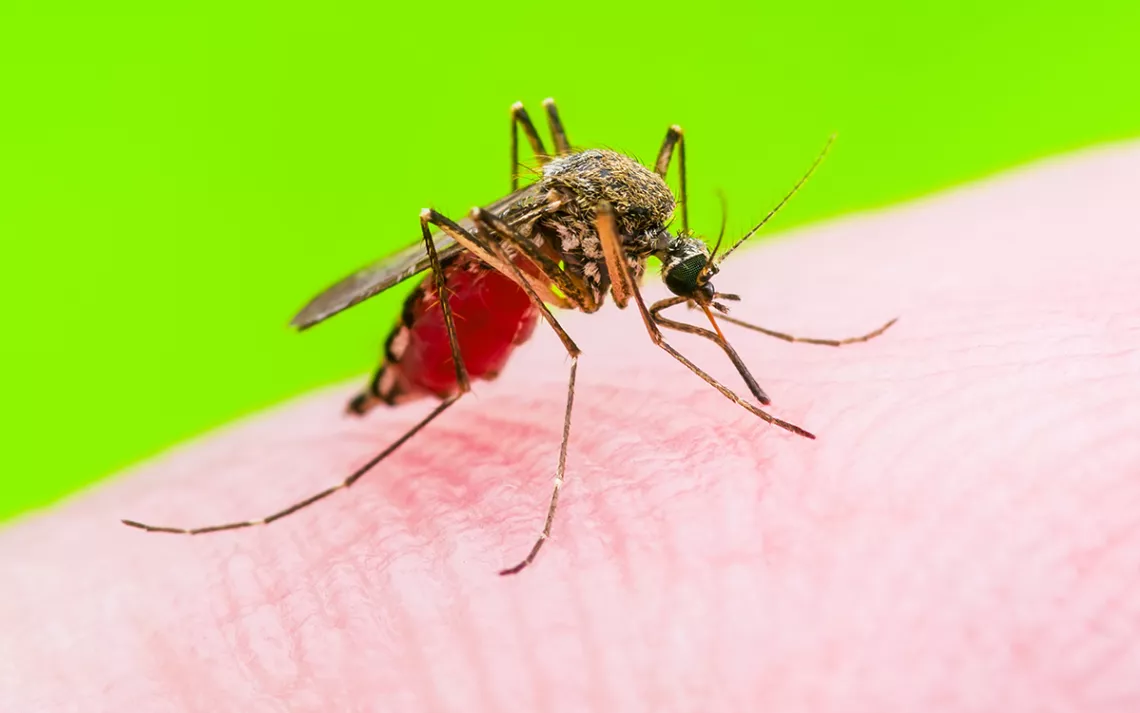5 DEET-Free Ways to Protect Yourself From Bugs
Here’s the truth about natural bug-spray alternatives
Summer is on the horizon, which means it’s time for backyard barbecues, outdoor adventures, and all their accompanying bug bites. Flies, ticks, mosquitoes, and other blood-sucking insects aren’t just a nuisance. Those that transmit diseases—from chikungunya to Rocky Mountain spotted fever—present a serious public health threat.
Found in most commercial bug sprays, DEET is a synthetic repellent that was developed for the US military in the 1940s and came into commercial use in the 1950s. It’s widely considered to be the most consistently effective active ingredient for keeping bugs at bay. However, while most people can use DEET-based products without negative consequences, some experience skin rashes, nausea, eye irritation, and more, especially when using the product in its long-lasting higher concentrations. Furthermore, DEET damages plastic and synthetic gear and doesn’t easily degrade in naturally occurring bodies of water, meaning it persists in aquatic ecosystems.
Fortunately for today’s fans of natural products, there are several alternatives out there, and the options are getting stronger every year. We looked into the science of dodging bug bites to find out whether, and to what extent, some of the most popular natural alternatives to DEET are getting the job done.
Oil of Lemon Eucalyptus (OLE)
The lemon eucalyptus tree, also known as Eucalyptus citriodora or Corymbia citriodora, serves as the basis for one of the most effective and well established natural mosquito and tick repellents. Oil of lemon eucalyptus (OLE) is a waste product left behind when its leaves and branches are distilled to make lemon-eucalyptus essential oil. Because OLE and its main active compound para-methane 3-8, diol (PMD), is more stable than its precursor, it evaporates more slowly and thus keeps the bugs away for longer.
Now is the time for environmental journalism.
Sign up for your Sierra magazine subscription.

Depending on their concentration, products containing OLE have been shown to provide protection for two to 12 hours or more after a single application. This is consistent with DEET. In fact, OLE and its active compound PMD are the only naturally derived active ingredients that the CDC endorses for use in disease-endemic areas.
How to find it in product form: Repel’s Plant-Based Lemon Eucalyptus Insect Repellent2 is 30 percent OLE (about 65 percent PMD) and has a great track record, though some folks find it a bit greasy and smelly. Approximately $6 for four ounces.
Citronella (With Vanillin)
Citronella extracts combined with essential oils are derived from lemongrass and approved by the EPA as a safe and effective insect repellent. However, like other essential oils, citronella tends to evaporate rapidly compared with OLE or synthetic active compounds such as DEET. Furthermore, the efficacy of specific products varies considerably depending on formulation and on which bugs are being repelled. For example, citronella seems to protect better against Anopheles mosquitoes—which transmit malaria—than those of the Aedes species, which are carriers of Zika, dengue, and yellow fever. Various concentrations lasted from one to three hours, and even longer when 5 percent vanillin was added to the mix. Most of the citronella concoctions tested by researchers range from 10 to 30 percent concentration, but because citronella can cause skin sensitivity, actual products on the market max out at concentrations of 10 percent, and the available EPA-registered citronella products come in at 5 percent or less.
How to find it in product form: Buzz Away products are EPA-registered as mosquito repellents, though reviews (and their chemical makeup) suggest they should keep ticks away as well. A four-ounce spray bottle of Buzz Away Extreme costs $10.
Neem
The neem tree is indigenous to the Indian subcontinent and is cultivated throughout southern and southeast Asia as well as on a handful of farms in the Americas. The neem tree is drought-resistant and affordable to process. What’s more, all throughout its 4,000-year history as a popular ingredient in Ayurvedic medicine, the tree's products have long been touted as safe, natural treatments for everything from acne to ulcers.
When it comes to neem’s efficacy as an insect repellent, scientific findings are mixed: Neem oil, derived from the tree’s seeds, is registered with the EPA as an agricultural pesticide, but no neem extractions meet the organization’s standards for a repellent. Some research shows bite-reduction rates of just 25 percent and protection periods as short as two hours. However, field studies indicate that neem can offer 75 to 100 percent protection from mosquito bites for up to 12 hours. So, while the jury is still out on this one, there’s a lot of promise, especially given neem’s diverse mechanisms of action and its well-established health- and earth-friendliness. Most neem-based repellents claim to protect against a variety of biting insects, including gnats, flies, and mosquitoes.
How to find it in product form: Based in the northern Bahamas, Abaco Neem grows 8,500 organic trees and produces a range of neem-based products on site. Its insect repellent, Botanical Outdoor Lotion, incorporates citronella and rosemary oils. $6 (plus shipping) for a two-ounce bottle.
Catnip Oil
Much more than house felines’ favorite mind-altering substance, catnip—a member of the mint family—is also an EPA-registered mosquito repellent. Much like its minty-fresh brethren, catnip species such as Nepata cataria are easy keepers, requiring few resources to grow, even in large quantities. The derivative, catnip oil, is approved for topical application at a concentration of 7 or 15 percent, and the oil deters pests and disease vectors for up to seven hours. Catnip oil has also been shown to be a more effective spatial repellent than DEET when applied to clothing, and it repels flies, cockroaches, termites, dust mites, and deer ticks as well.
How to find it in product form: Four Elements sells a four-ounce repellent with lavender and catnip for $11.95.
Grapefruit Seed Extract
If you’re looking for an insect repellent with an active ingredient that’s safe enough to drink, keep your eyes peeled for products with nootkatone, a compound derived from citrus seeds and Alaska yellow cedar trees. Seeking a natural product that would be practical and pleasant for people to use, the CDC took on the research into this promising repellent compound, and its spokespeople now believe nootkatone products will be effective against ticks, certain mosquitoes, and bed bugs.
Though the compound is awaiting EPA approval and most products are currently in the R&D phase, look out for soaps, sprays, and lotions coming onto the market. And although nootkatone is an insecticide—killing mosquitoes and ticks—it’s extremely safe for humans, as it’s already been approved as food-grade. As a bonus, researchers are hopeful that the light, citrusy scent and nongreasy feel of nootkatone-containing products will make people actually want to apply this insect repellent.
How to find it in product form: A four-ounce spray bottle of Mozzi Magic sells for $27. Evolva has been awarded a contract from the US government to develop products containing NootkaShield. While nootkatone awaits EPA approval as an insect repellent, products cannot yet list the compound as an active ingredient.
 The Magazine of The Sierra Club
The Magazine of The Sierra Club




